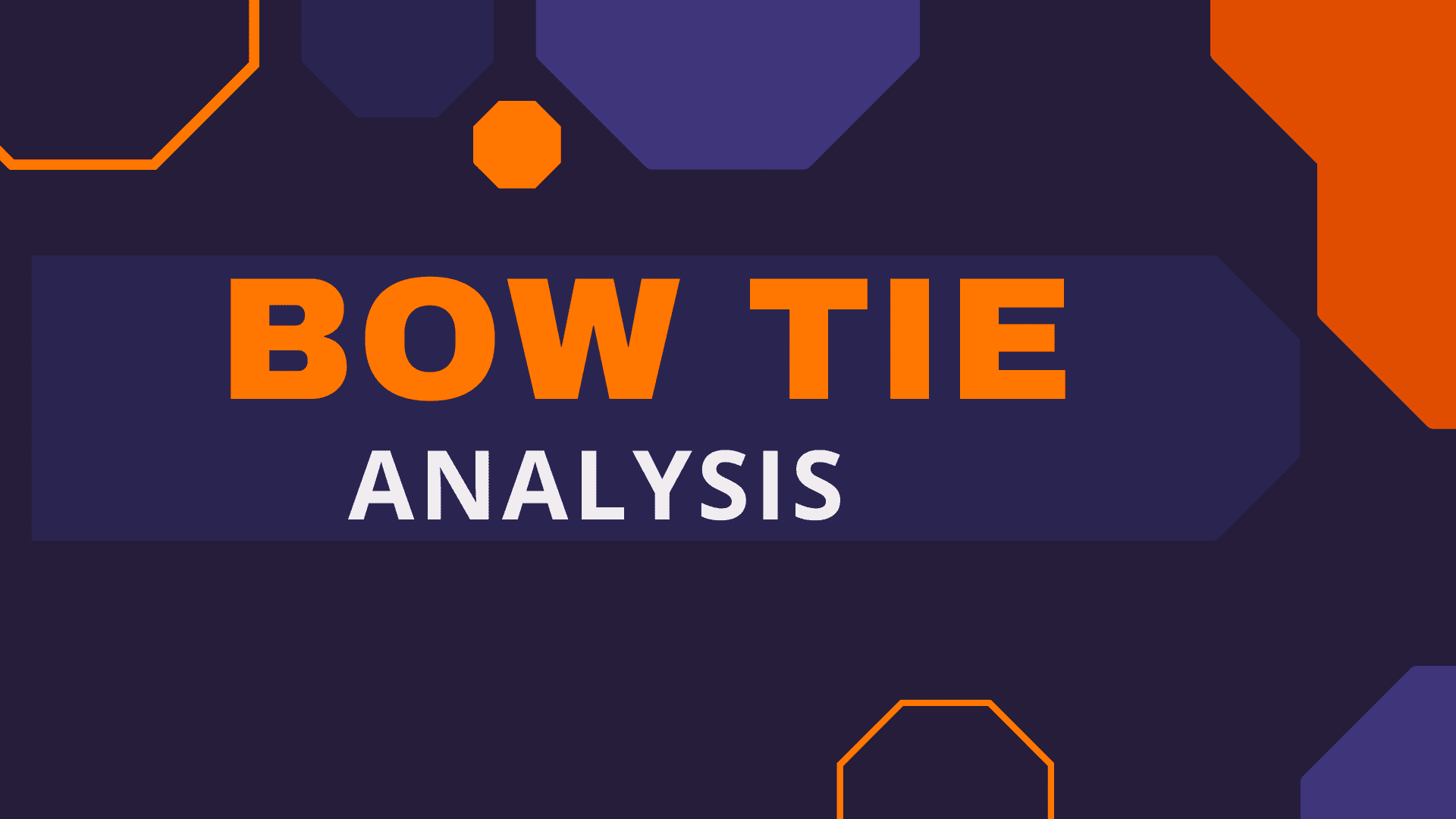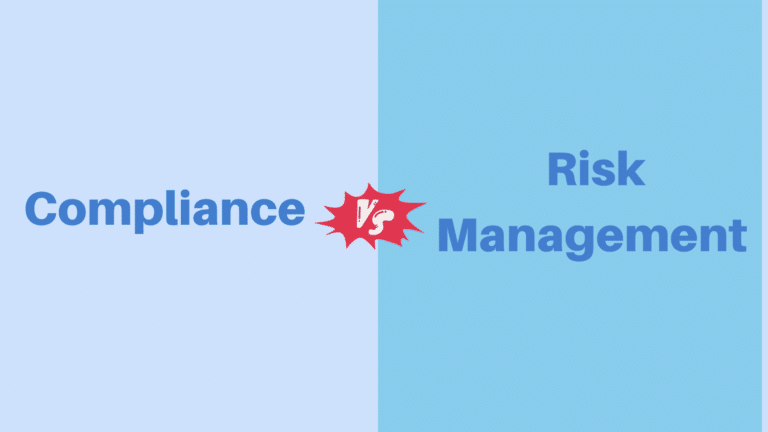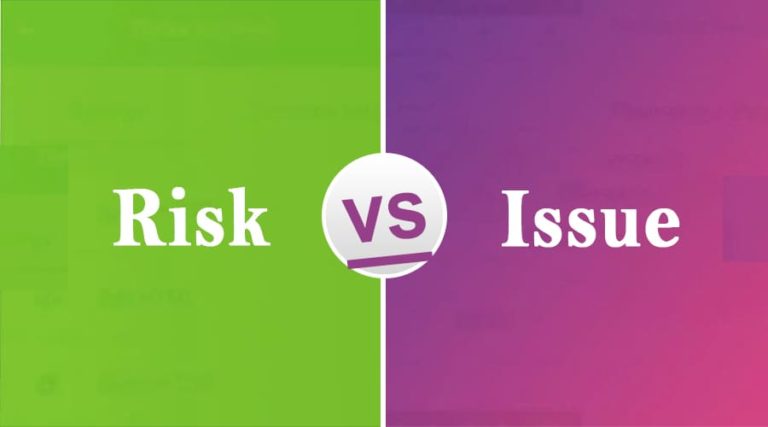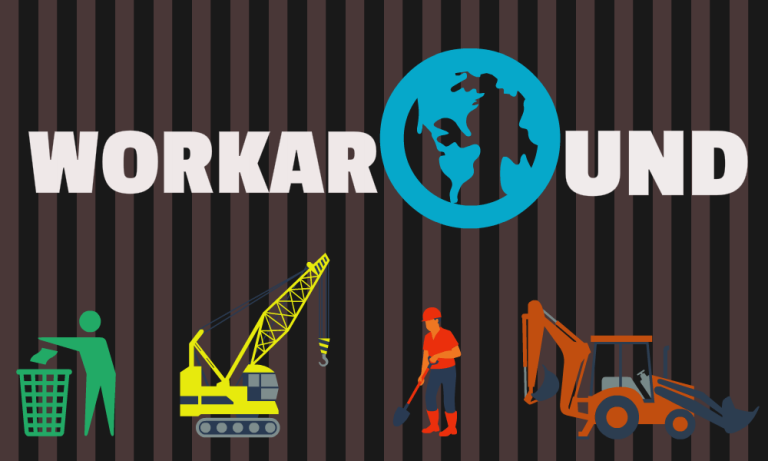A bow tie analysis is a risk assessment tool that visually shows the risk event, its causes, and its outcome. This visual representation is known as a “bow-tie” because of its resemblance to its namesake.
Bow tie analysis is also known as a cause-consequence diagram, a combination of the fault tree and the event tree. The fault tree is on the left-hand side and analyzes the causes of the event, and the event tree is on the right-hand side and analyzes the consequence of the risk event.
This technique is essential to risk management and helps project managers develop risk response plans.
The bow tie diagram is comprised of three parts: (1) the causes on the left, (2) the risk event in the center, and (3) the consequences on the right.
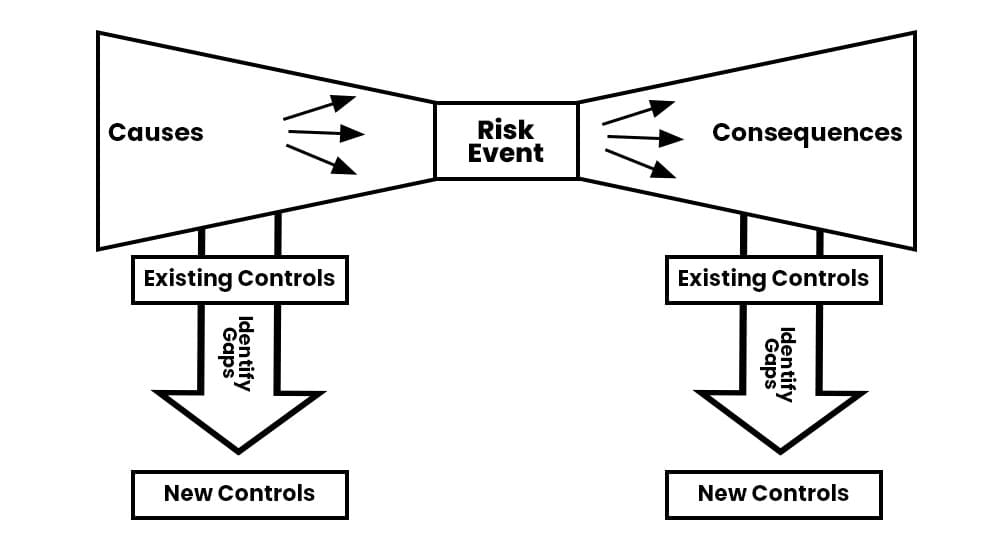
The bow tie analysis focuses on the barriers (controls) shown on the left node that can affect the risk event or the consequence on the right node.
The bow tie analysis identifies control gaps so you can apply additional controls.
Effective controls address causes to stop them from arising or leading to the risk; this is called preventive controls.
On the right, controls should respond to consequences.
They can influence the consequences of project objectives (i.e., corrective or reactive controls) or detect changes quickly and provide triggers for contingency plans (i.e., detective controls).
How to Perform a Bow Tie Analysis
You can take the following steps to perform a bow tie analysis:
- Identify the Event: The bow tie analysis analyzes a single risk or hazard. First, you can identify the key event that needs to be analyzed to reduce or avoid its impact. Afterward, you will keep the risk in the middle rectangle.
- Identify the Causes: You will provide the event’s root causes on the left. An event may not necessarily have a single cause; it may have multiple causes. To perform a root-cause analysis, provide all potential causes of the risk event.
- Provide the Consequences: On the right, you will mention the risk event’s potential outcome. Again, the outcome may be singular or multiple. You must mention all event outcomes.
- Implement Control Measures: This is a vital step in which you will apply measures that will prevent the cause and, in turn, reduce the chances of the risk event occurring. These are called “preventive barriers.”
- Mitigate Negative Outcomes: This is also a vital step in which will implement the control measures on the right to reduce or avoid the risk event’s negative consequences. These are called “recovery barriers” or “corrective actions.”
Bow Tie Analysis Template
Bow Tie Analysis Template for a Construction Project: Structural Failure
Event: [e.g., Structural Failure During Construction]
Threats (Left Side of Bow Tie):
- Threat #1: [e.g., Design Flaws]
- Threat #2: [e.g., Material Deficiencies]
- Threat #3: [e.g., Poor Workmanship]
- Threat #4: [e.g., Environmental Factors]
Top Event (Center of Bow Tie):
- Top Event: [e.g., Structural Failure]
Consequences (Right Side of Bow Tie):
- Consequence #1: [e.g., Human Injury]
- Consequence #2: [e.g., Property Damage]
- Consequence #3: [e.g., Project Delays]
- Consequence #4: [e.g., Reputation Damage]
Preventative Barriers:
- Barrier #1: [e.g., Quality Control Measures]
- Barrier #2: [e.g., Regular Inspections]
- Barrier #3: [e.g., Compliance with Standards]
- Barrier #4: [e.g., Risk Assessment]
Recovery Barriers:
- Barrier #1: [e.g., Emergency Response Plan]
- Barrier #2: [e.g., Insurance Coverage]
- Barrier #3: [e.g., Legal Protocols]
- Barrier #4: [e.g., Communication Plan]
Monitoring and Review:
- Aspect #1: [e.g., Continuous Monitoring]
- Aspect #2: [e.g., Incident Review]
- Aspect #3: [e.g., Feedback Loops]
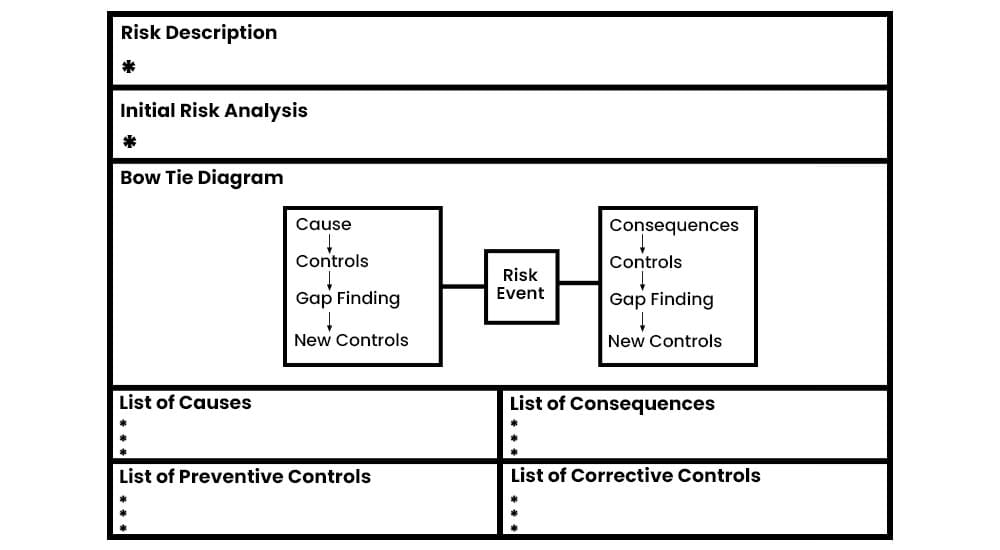
Bow Tie Analysis Example
Now, we will see an example of bow tie methodology for a construction project.
Consider a bow tie analysis for the risk of a structural failure.
Event: Structural Failure During Construction
Threats (Left Side of Bow Tie):
- Design Flaws: Inadequate structural design or miscalculations
- Material Deficiencies: Use of substandard construction materials
- Poor Workmanship: Inaccurate or careless construction practices
- Environmental Factors: Natural events (e.g., earthquakes, floods, or extreme weather conditions)
Top Event (Center of Bow Tie):
- Structural Failure: The primary event we want to prevent
Consequences (Right Side of Bow Tie):
- Human Injury: Physical harm to construction workers or nearby residents
- Property Damage: Destruction of the building and potential damage to surrounding structures
- Project Delays: Halted construction and potential financial losses
- Reputation Damage: Negative impact on the construction company’s reputation
Preventative Barriers:
- Quality Control Measures: Stringent quality checks during material procurement and construction
- Regular Inspections: Routine inspections of the construction site and ongoing work
- Compliance with Standards: Adhering to industry standards and building codes
- Risk Assessment: Periodic risk assessments to identify and address potential issues
Recovery Barriers:
- Emergency Response Plan: A well-defined plan in case of structural failure
- Insurance Coverage: Adequate insurance to cover potential financial losses
- Legal Protocols: Compliance with legal requirements and regulations
- Communication Plan: Clear communication channels to inform stakeholders of any incidents
Monitoring and Review:
- Continuous Monitoring: Real-time monitoring of construction activities and structural integrity
- Incident Review: Thoroughly analyzing any incidents or near-misses to improve future practices
- Feedback Loops: Establishing mechanisms for workers to report concerns or suggestions
Bow Tie Method Benefits
Some benefits of bow tie analysis are:
- Risk Visualization: Bow tie diagrams clearly and concisely represent potential risks, as well as their causes and consequences. These diagrams help stakeholders easily understand the complexity of a risk scenario.
- Comprehensive Understanding: Bow tie diagrams help provide a comprehensive understanding of potential risks by considering the causes that may lead to an event, as well as the consequences that may follow.
- Risk Communication: The visual nature of bow tie diagrams makes them an effective tool for communication, as they facilitate communication between different stakeholders.
- Critical Control Identification: Bow tie analysis helps identify critical controls that can prevent or mitigate the consequences of a negative event.
Bow Tie Method Limitations
The bow tie method applies to negative events and does not consider positive risks or opportunities.
Also, this method takes time and is used only for high-ranking and critical risks. Using it on every risk will consume enough time and resources.
Constructing a bow tie diagram involves subjective judgments when identifying hazards, consequences, and risk-control measures. Experts may have varying perspectives on the likelihood and consequences of events, thereby leading to inconsistent risk assessments.
Bow tie diagrams assume that risk-control measures are independent of each other. This means the failure of one control does not affect the effectiveness of others. However, dependencies between controls may exist, and the failure of one control can indeed compromise the effectiveness of others.
Summary
Bow tie analysis diagrams visually show critical risks to stakeholders so they can better understand the project’s critical components and potential weak points. Bow tie analysis facilitates communication and helps develop strategies to mitigate risks and enhance overall project safety.
You must regularly update and review the diagram to ensure that the analysis remains relevant throughout the project lifecycle, as well as to help reduce risks in the system.
This topic is important from a PMP and PMI-RMP exam point of view.

I am Mohammad Fahad Usmani, B.E. PMP, PMI-RMP. I have been blogging on project management topics since 2011. To date, thousands of professionals have passed the PMP exam using my resources.

